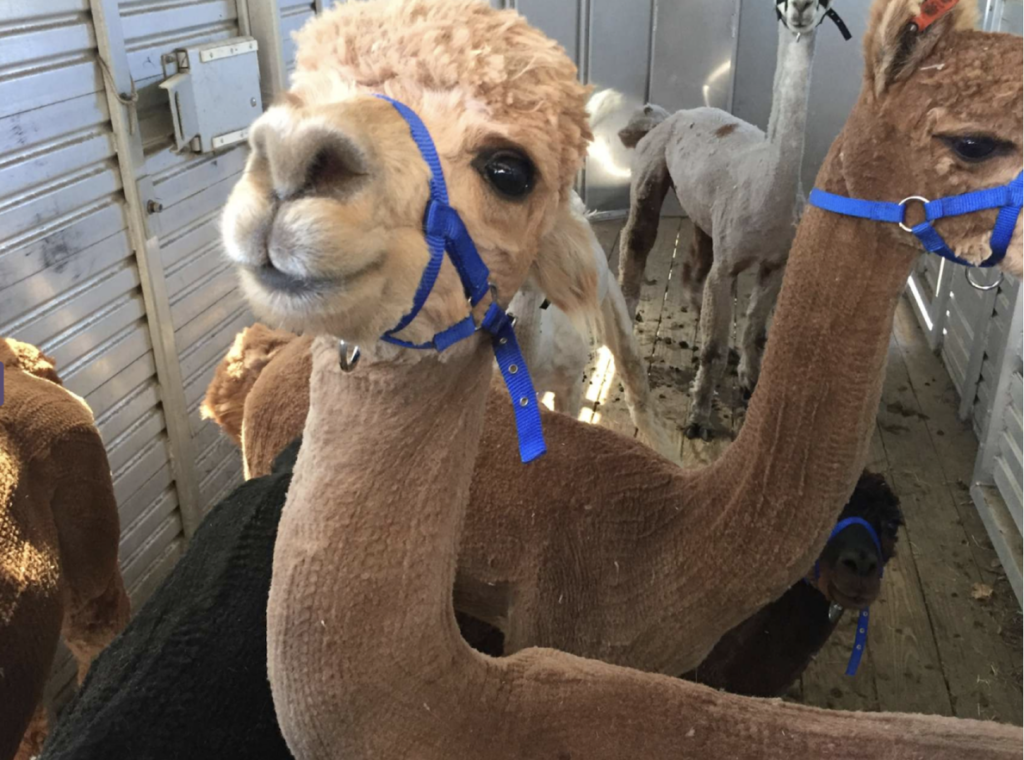Have you ever heard stories about the possibility of a girl’s hymen tearing while riding a bicycle, exercising, using a tampon, or simply going to the bathroom? Though an “intact” hymen is often mistakenly associated with virginity, it can easily rupture from everyday activities. Dr. Patricia Brennan is working on dispelling the common association of the hymen with sexual abstinence, since it is often used to fuel cultural misconceptions of purity and moral behavior. Her interest was prompted by an unexpected discovery during a veterinary examination of alpacas, which she began raising on her farm. By exploring the evolutionary history of the hymen across mammals, she hopes to better inform the public and the scientific community about the function of this emblematic structure of reproductive anatomy.
Dr. Brennan, an Associate Professor of Biology at Mount Holyoke College, researches the evolution of genitalia in vertebrates. Throughout her career, she has worked to address significant gaps in the understanding of female anatomy that persist in the scientific literature. She was surprised when a veterinarian had trouble inserting a probe during an alpaca’s cervical exam due to the thickness of the hymen. This observation led her to question how this structure might vary in shape, location, and function across and within different mammal species.

Biologically, the hymen is thought to be a vestigial structure from tissue development—yet many cultural ideas of purity are still associated with its integrity. During mammalian embryogenesis, structures known as Müllerian ducts migrate down towards the urogenital sinus, forming the developing uterus and vagina. New tissues, which proliferate at the junction of these two structures, eventually make up the hymen. This byproduct of development naturally becomes perforated throughout growth and eventually torn during adolescence or pubescence.
Dr. Brennan’s research aims to learn more about the evolution of the hymen in other mammals. Her students took on this topic enthusiastically during the COVID-19 pandemic. The project began with a literature review, during which former undergraduate Adrianne Wu combed through books—many of which were only available in German—covering the reproductive tracts of diverse taxa. The research team, later joined by pre-medical student Kayla Fennell, searched for mentions of the presence or absence of the hymen in different species.
“Typically, when you conduct this kind of big literature review, you can just type research terms into databases. But when we tried the word ‘hymen’, there were almost no hits,” Dr. Brennan explained. The struggle to find past literature emphasized the importance of undertaking the study.
With scant literature in hand, lab postdoctoral fellow Dr. Rachel Keeffe was able to trace the evolution of the hymen on an evolutionary tree for mammals. For the species where the hymen was present, the Brennan Lab is investigating whether it changes during development and how it varies within taxa.
“It is about reporting what is out there. There is very little research about the diversity of the hymen. In humans it changes dramatically, and it just hasn’t been studied in any systematic way [in other mammals].”
Now, Dr. Brennan is asking researchers who do dissections and scans to expand this dataset. By tracing the distribution, development, and morphology of different species’ hymens, she hopes to provide answers regarding its actual function in mammals.
As someone who grew up in Colombia, Dr. Brennan has observed in U.S. culture what she considers the vestiges of its more puritanical origins. Part of that legacy, she believes, is how the hymen is mischaracterized in popular culture. She wants researchers to recognize the power of science when it comes to correcting social misconceptions. Conversations regarding sexuality and female reproductive biology have long been dominated by stigma, yet science possesses the power to break through such cultural barriers. By investigating how the hymen has evolved, centering reproductive anatomy in a historical context may dispel persistent cultural beliefs and reveal the often overlooked, and even repressed, important biology.
Author: Sacha Sides

